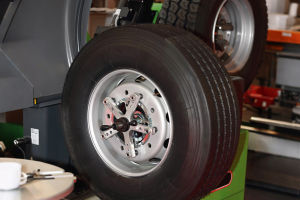Buying a first car feels exciting, but also a little scary. Are you about to invest in freedom—or commit to years of stress?
A handful of smart choices made before visiting the showroom can protect your budget, prevent surprise bills, and turn that first set of keys into real independence.
Know Your Needs
One of the biggest beginner mistakes is shopping for a dream car instead of a practical one.
Before opening any listing, think carefully about daily life: commute length, traffic, passengers, cargo, parking, and climate. Automotive experts repeatedly stress that the “right” car is the one that fits routine reality, not advertising images.
Once those needs are clear, move beyond glossy photos and dive into data.
Compare reliability ratings, crash-test results, fuel economy, insurance estimates, and common repair costs for models on your shortlist. Well-regarded buyer guides and long-term tests can reveal patterns, such as frequent transmission failures or pricey parts, that a quick showroom visit will never expose.
Smart Budgeting
Another common mistake is letting the monthly payment drive every decision.
Consumer finance professionals often suggest keeping total car expenses—loan, insurance, fuel, parking, and maintenance—within roughly 15%–20% of monthly take-home pay. That rule of thumb leaves space for savings, emergencies, and everyday living without constant money stress.
Long loan terms can quietly wreck that balance.
Stretching a purchase to 72 or 84 months may shrink the monthly number but usually increases total interest and keeps drivers paying long after the car’s value has dropped. Whenever possible, aim for a term of 60 months or less and confirm the payment still feels comfortable on a realistic budget.
Check The Car
Skipping a professional inspection might be the most expensive shortcut a first-time buyer can take.
A car can shine in photos, pass a quick drive, and still hide worn suspension parts, leaks, or structural damage. Independent mechanics, who see hundreds of vehicles, can identify subtle warning signs long before they become breakdowns and big repair bills.
Verification should always include a full vehicle history report.
This document shows recorded accidents, title problems, odometer rollbacks, and sometimes service records. Specialists in used-car valuation strongly recommend reviewing a report for every pre-owned vehicle, whether it comes from a private driveway or a large dealership. If a seller refuses, consider that an immediate red flag.
Drive And Compare
Many first-time buyers treat the test drive like a quick formality, but it is the best chance to uncover daily frustrations. During the drive, pay attention to visibility, seat comfort, control layout, braking feel, and cabin noise. Try common tasks: parking in a tight space, climbing a hill, turning sharply, and merging into faster traffic.
Driving several candidates on the same day makes the differences much easier to feel.
One car may handle bumps more smoothly, another may steer more precisely, and a third might offer far better rear-seat room. Treat the test drive as a rehearsal for daily life: bring regular passengers when possible and spend more than ten rushed minutes behind the wheel.
Financing First
Waiting until you are in the finance office to think about a loan is a classic misstep.
Automotive finance specialists strongly recommend getting preapproved through a bank, credit union, or reputable online lender before visiting a dealership. Preapproval reveals the rate and terms your credit truly qualifies for and turns vague promises into clear numbers.
With that benchmark in place, dealership financing becomes just one more quote to compare.
If the dealer beats your preapproved offer, excellent; if not, you already have a solid option. Read every line of the contract, watching for add-on products bundled into the payment, unnecessary insurance, high documentation fees, and any penalty for early payoff or extra principal payments.
Use Smart Options
One of the quietest money mistakes is ignoring tools that tilt the process in your favor.
Many dealerships run internet sales departments that provide written quotes, inventory lists, and current incentives without intense face-to-face pressure. Reaching out to several stores online lets you compare offers calmly and invite them to compete for your business.
Another overlooked advantage is considering high-quality used or certified pre-owned vehicles instead of insisting on brand new. These cars often undergo detailed inspections, receive reconditioning, and carry extended warranty coverage from the manufacturer. Industry experts frequently note that letting someone else absorb the steepest early depreciation can save thousands while still delivering modern safety, comfort, and technology.
Conclusion
Buying a first car does not need to be a financial expert. Clarifying needs, setting a realistic budget, checking inspections and history, test-driving thoughtfully, securing financing upfront, and using online and used-car options all help transform a major purchase into a strong step forward. Which of these potential mistakes feels most important to avoid for you, and what smart move will you make first?


